#genelab
Explore tagged Tumblr posts
Text
Solle Campaign - A little tidbit
So [dramatic pause] here’s the thing.
I have a player - the Miami Vice reference (which makes sense later in this sentence) is a gentleman who played the first editions of Mutant in the 1980′s. He can claim he played games together with a legend of the industry in Sweden - Anders Muammar - who did many iconic illustrations for the 2002 edition and also produced a short film (Balladen om den vilsne vandraren).
Now, I managed to come over a trove of convention adventures ran in Sweden in the 1980′s and 1990′s, and some were published in the local RPG magazine of the day - Sinkadus - and I was telling him about this adventure called Genelab Alpha.


And I mentioned this archive to this guy, and mentioned I found the inspiration for a 2010′s expansion for the Mutant: Year 0 edition - simply called Genelab Alpha.
“Oh yeah, I played this in 1987. I think I was the rabbit.”

#solle campaign#mutant#ttrpg#interesting#swedebeast gm#mutant ua#undergångens arvtagare#mutant undergångens arvtagare#mutant year 0#mutant year zero#genlab alfa#genlab alpha#genelab alpha
4 notes
·
View notes
Text

International consortium with NASA reveals hidden impact of spaceflight on gut health
Scientists have uncovered how spaceflight profoundly alters the gut microbiome, revealing previously unknown effects on host physiology that could shape the future of long-duration space missions.
Led by University College Dublin (UCD) and McGill University, Canada, in collaboration with NASA and an international consortium, the research offers the most detailed profile to date of how space travel impacts the gut microbes we carry into space.
Published in npj Biofilms and Microbiomes, the study used advanced genetic technologies to examine changes in the gut microbiome, colons, and livers of mice aboard the International Space Station (ISS) over three months. The findings reveal significant shifts in specific bacteria and corresponding changes in host gene expression associated to immune and metabolic dysfunction commonly observed in space, offering new insights into how these changes may affect astronaut physiology during extended missions.
Dr Emmanuel Gonzalez, McGill University, and first author of the study, said: "Spaceflight extensively alters astronaut physiology, yet many underlying factors remain a mystery. By integrating new genomic methods, we can simultaneously explore gut bacteria and host genetics in extraordinary detail and are beginning to see patterns that could explain spaceflight pathology. It’s clear we’re not just sending humans and animals to space, but entire ecosystems, the understanding of which is crucial to help us develop safeguards for future space exploration."
The international collaboration, spearheaded by UCD with NASA GeneLab’s Analysis Working Groups, is part of the recent Nature Portfolio package: The Second Space Age: Omics, Platforms and Medicine across Space Orbits - the largest coordinated release of space biology discoveries in history. These findings highlight Ireland's growing role in microbiome and space life sciences research and demonstrate how understanding biological adaptations to spaceflight can not only advance aerospace medicine but also have significant implications for health on Earth.
Professor Nicholas Brereton, UCD School of Biology and Environmental Science, and senior author of the study, said: "These discoveries highlight the intricate dialogue between specific gut bacteria and their mouse hosts, critically involved in bile acid, cholesterol, and energy metabolism. They shed new light on the importance of microbiome symbiosis to health and how these Earth-evolved relationships may be vulnerable to the stresses of space. We hope this research exemplifies how cooperative Open Science can drive discoveries with clear medical benefits on Earth, while also supporting the upcoming Artemis missions, the deployment of the Gateway deep space station, and a crewed mission to Mars."
Ames Space Biology Portfolio Scientist, NASA Ames Research Center, Jonathan Galazka said: "These discoveries are an important piece in our understanding of how spaceflight impacts astronauts and will aid the design of safe and effective missions to Earth orbit, the Moon, and Mars. Moreover, the collaborative nature of this project is a blueprint for how Open Science can accelerate the pace of discovery.”
2 notes
·
View notes
Text
'The Darkest Romance' สาดความหลอนพร้อมความเดือดในเพลง 'ไม่เลือนหาย'
https://www.naewna.com/entertain/836146 ‘The Darkest Romance’ สาดความหลอนพร้อมความเดือดในเพลง ‘ไม่เลือนหาย’ วันเสาร์ ที่ 19 ตุลาคม พ.ศ. 2567, 06.00 น. เป็นเพลงที่กำลังได้รับความนิยมจากแฟนๆ และผู้ชมภาพยนตร์ฟอร์มยักษ์ของไทย “ธี่หยด 2” อย่างต่อเนื่องสำหรับ “ไม่เลือนหาย”เพลงประกอบภาพยนตร์ “ธี่หยด 2” จากThe Darkest Romance วง Alternative Metal สังกัดค่าย GeneLab ในเครือ GMM…

View On WordPress
0 notes
Text
Best Genetic Labs in New Delhi
At GeneLab, we are dedicated to revolutionizing healthcare through cutting-edge genetic testing solutions. Our mission is to empower individuals, healthcare providers, and researchers with comprehensive insights into genetic predispositions, disease risks, and personalized treatment options. Best Genetic Labs in New Delhi
Cancer remains one of the most formidable health challenges worldwide, (Best Genetic Labs in New Delhi) but advances in genetic testing are transforming the landscape of cancer diagnosis and treatment. By analyzing an individual’s genetic material, healthcare providers can now detect cancer earlier and tailor treatments to the genetic profile of each patient. This blog delves into how genetic testing is revolutionizing cancer care through early detection and precision treatment options.
The Role of Genetic Testing in Early Detection (Best Genetic Labs in New Delhi)
Early detection is crucial in the fight against cancer, as it significantly increases the chances of successful treatment and survival. Genetic testing can identify individuals at high risk for certain types of cancer before symptoms appear. For instance, mutations in the BRCA1 and BRCA2 genes are linked to a higher risk of breast and ovarian cancers. Individuals with these mutations can undergo more frequent screenings and take preventive measures, such as prophylactic surgeries or medications, to reduce their risk. (Best Genetic Labs in New Delhi)
Beyond identifying predispositions, genetic testing can detect cancer in its nascent stages. Liquid biopsies, which analyze circulating tumor DNA (ctDNA) in the blood, offer a non-invasive method to spot early signs of cancer. These tests can detect genetic mutations and alterations associated with cancer, enabling interventions when the disease is most treatable.
Precision Medicine: Tailoring Treatment to Genetic Profiles (Best Genetic Labs in New Delhi)
The concept of precision medicine, or personalized medicine, is central to modern oncology. By understanding the genetic makeup of a tumor, doctors can devise treatment plans that specifically target the cancer’s unique characteristics. This approach contrasts with traditional treatments that may not consider the genetic variability of tumors, potentially leading to less effective outcomes.
Targeted Therepies
Targeted therapies are a cornerstone of precision medicine. These drugs are designed to attack specific genetic mutations driving cancer growth. For example, in non-small cell lung cancer (NSCLC), mutations in the EGFR gene can be targeted by drugs like gefitinib and erlotinib, leading to improved outcomes compared to standard chemotherapy. Similarly, HER2-positive breast cancers can be treated with trastuzumab, a drug that specifically targets the HER2 protein, resulting in more effective and less toxic treatments. (Best Genetic Labs in New Delhi)
Immunotherapy
Immunotherapy leverages the body’s immune system to fight cancer. Genetic testing can identify biomarkers that predict a patient’s response to immunotherapy. For instance, tumors with high levels of microsatellite instability (MSI) or mutations in the mismatch repair (MMR) genes are more likely to respond to immune checkpoint inhibitors, which unleash the immune system to attack cancer cells. By selecting patients who are most likely to benefit, genetic testing enhances the efficacy of immunotherapy.
Overcoming Challenges and Ethical Considerations
While genetic testing holds immense promise, it also presents challenges and ethical dilemmas. False positives or negatives can lead to unnecessary anxiety or false reassurance. Moreover, interpreting genetic data (Best Genetic Labs in New Delhi) requires sophisticated bioinformatics tools and expertise, which may not be readily available in all healthcare settings.
Ethical considerations also arise regarding genetic privacy and discrimination. Patients must provide informed consent, understanding the implications of their genetic information. Legislation, such as the Genetic Information Nondiscrimination Act (GINA) in the United States, seeks to protect individuals from discrimination based on their genetic information in health insurance and employment.
The Future of Genetic Testing in Cancer Care
The future of cancer care is poised to be increasingly intertwined with genetic testing. As technology advances, we can expect even more precise and comprehensive genetic tests. The integration of artificial intelligence (AI) and machine learning will enhance our ability to interpret vast amounts of genetic data, leading to more accurate diagnoses and personalized treatments.
Moreover, the cost of genetic testing is likely to decrease, making these life-saving technologies accessible to a broader population. This democratization of genetic testing (Best Genetic Labs in New Delhi) will enable more equitable healthcare and improve outcomes for patients across diverse demographics.
Conclusion
Genetic testing is revolutionizing cancer care by enabling early detection and precision treatment. By identifying individuals at high risk and tailoring treatments to the genetic profiles of tumors, healthcare providers can offer more effective and less invasive options. As we continue to advance our understanding and technology, genetic testing will undoubtedly play an increasingly vital role in the fight against cancer, (Best Genetic Labs in New Delhi) offering hope for better outcomes and improved quality of life for patients worldwide.
1 note
·
View note
Text
Space Biosciences Events
Events Upcoming Events and Activities To explore deeper into space, it is crucial that we learn how our bodies change and adapt to the unique environment of space. The Open Science Data Repository (a combination of GeneLab and Ames Life Sciences Data Archive – ALSDA – datasets) helps scientists understand how the fundamental building blocks […] from NASA https://ift.tt/gKpq5be
1 note
·
View note
Link
7 Min Read Monitoring Microorganisms iss070e049644 (Dec. 30, 2023) — A set of the International Space Station's main solar arrays, slightly obscuring the smaller roll-out solar arrays, and the Kibo laboratory module with its exposed facility, a research platform that hosts external experiments, are pictured 261 miles above the Pacific Ocean. Credits: NASA Science in Space January 2024 Crew members on the International Space Station have a lot of company – millions of bacteria and other microbes. The human body contains 10 times more microbes than human cells, and bacteria and fungi grow in and on just about everything around us on Earth. Most bacteria are harmless, and many are beneficial or even essential to human functioning and well-being. But microgravity can make some microbes more likely to cause disease and bacteria and fungi may affect the function of spacecraft systems, by, for example, corroding metal. These organisms also could contaminate other planetary bodies that spacecraft and humans land on. Some microbes inevitably come along for the ride on crew members and cargo traveling to the space station, and it is important to identify and control those that may be harmful – especially in a closed environment like a spacecraft. Multiple investigations have tracked, identified, and analyzed the station’s tiniest residents to help keep crew members and equipment – and even other planets – safe from any potential threats. A current investigation, ISS Boeing Antimicrobial Coating, tests surface coatings designed to inhibit the growth of microbes to protect crew members and equipment on a spacecraft. On Earth, such coatings could help reduce diseases transmitted from touching surfaces in aircraft cabins, health care facilities, public transportation, and other settings. NASA astronaut Megan McArthur documents touch panels installed for the ISS Boeing Antimicrobial Coating investigation.NASA Microbial Observatory-1 was one of the first investigations to monitor the types of microbes present on the space station. Researchers produced the genomes of multiple microorganisms, including some that may act as pathogens and cause disease. Published results include a comprehensive catalog of bacteria and fungi1 deposited into the NASA GeneLab system. NASA astronaut Scott Kelly collects samples for Microbial Observatory-1.NASA The Microbial Tracking-2 investigation continued a series monitoring the types of microbes on the space station and attempted to catalog and characterize any with disease-causing potential. Researchers produced whole-genome sequences of 94 fungal strains2 and 96 bacterial strains of 14 species3. The data also revealed that Staphylococcus and Malassezia species were the most common bacteria and fungi, respectively, on the space station and that, overall, microorganisms associated with the human skin dominated the surface microbiome4. A Microbial Tracking-2 device collects air samples.NASA BioRisk-MSV, a long-running Roscosmos investigation, examined physical and genetic changes in bacteria and fungi on interior and exterior surfaces of the space station. Researchers found that microorganisms not only survive in this extreme environment but retain their reproductive ability as well. Most microorganisms also exhibited increased biochemical activity and resistance to antibiotics5. These findings have implications for developing planetary quarantine methods and biomedical safety systems for future missions. The TEST investigation from Roscomos examined samples from the exterior surface of the space station and in life support systems. This work demonstrated that it was possible to collect data on viable microorganisms from open space and identified specific non-spore-forming bacteria found there6. Researchers also found land and marine bacteria in cosmic dust samples collected during a spacewalk. These microbes may transfer from the upper atmosphere via the global electric circuit (a continuous movement of electric charge carriers such as ions) or they may have originated in space7. NASA’s ISS External Microorganisms plans to continue this work, collecting samples near life support system vents outside the station to examine whether the spacecraft releases microorganisms and, if so, how many and how far they may travel. Myco, an investigation from JAXA (Japan Aerospace Exploration Agency), evaluated whether fungi inhaled by crew members or that adhere to their skin can act as allergens. The data revealed an increased relative abundance of a common fungus associated with seborrheic dermatitis (an itchy skin rash), and the presence of several types of fungi not common on the skin8. Results also showed an abundance of a yeast that may have adhered to the skin of some crew members preflight, suggesting that a specific or uncommon microorganism can proliferate in a closed environment. This study was the first to reveal changes over time in the skin fungal microbiota of astronauts9. NASA astronaut Cady Coleman processes samples for the Myco Experiment. NASA JAXA also conducted a series of experiments, Microbe-I, Microbe-III, and Microbe-IV, monitoring the abundance and diversity of fungi and bacteria in Kibo, the station’s Japanese Experiment module. This work resulted in multiple publications reporting on the type and numbers of microorganisms detected10,11. ISS Internal Environments provided a baseline of the contaminants on the space station. These data provide insight into the microbes present from the initial stages of construction through ongoing habitation of the orbiting lab. This and other research on the microorganisms in and around the space station are helping to ensure that crew members remain in safe company on current and future missions. John Love, ISS Research Planning Integration ScientistExpedition 70 Citations: 1 Checinska Sielaff A, Urbaniak C, Mohan GB, Stepanov VG, Tran Q, Wood JM, Minich J, McDonald D, Mayer T, Knight R, Karouia F, Fox GE, Venkateswaran KJ. Characterization of the total and viable bacterial and fungal communities associated with the International Space Station surfaces. Microbiome. 2019 April 8; 7(1): 50. DOI: 10.1186/s40168-019-0666-x. 2 Simpson AC, Urbaniak C, Bateh JR, Singh NK, Wood JM, Debieu M, O’Hara NB, Houbraken J, Mason CE, Venkateswaran KJ. Draft genome sequences of fungi isolated from the International Space Station during the Microbial Tracking-2 experiment. Microbiology Resource Announcements. 2021 September 16; 10(37): e00751-21. DOI: 10.1128/MRA.00751-21. 3 Simpson AC, Urbaniak C, Singh NK, Wood JM, Debieu M, O’Hara NB, Mason CE, Venkateswaran KJ. Draft genome sequences of various bacterial phyla isolated from the International Space Station. Microbiology Resource Announcements. 2021 April 29; 10(17): e00214-21. DOI: 10.1128/MRA.00214-21. 4 Urbaniak C, Morrison MD, Thissen J, Karouia F, Smith DJ, Mehta SK, Jaing C, Venkateswaran KJ. Microbial Tracking-2, a metagenomics analysis of bacteria and fungi onboard the International Space Station. Microbiome. 2022 June 29; 10(1): 100. DOI: 10.1186/s40168-022-01293-0. 5 Sychev VN, Novikova ND, Poddubko SV, Deshevaya EA, Orlov OI. The biological threat: The threat of planetary quarantine failure as a result of outer space exploration by humans. Doklady Biological Sciences. 2020 January; 490(1): 28-30. DOI: 10.1134/S0012496620010093.PMID: 32342323. Russian Text © The Author(s), 2020, published in Doklady Rossiiskoi Akademii Nauk. Nauki o Zhizni, 2020, Vol. 490, pp. 105–108. 6 Deshevaya EA, Shubralova EV, Fialkina SV, Guridov AA, Novikova ND, Tsygankov OS, lianko PS, Orlov OI, Morzunov SP, Rizvanov AA, Nikolaeva IV. Microbiological investigation of the space dust collected from the external surfaces of the International Space Station. BioNanoScience. 2020 March 1; 10(1): 81-88. DOI: 10.1007/s12668-019-00712-1. 7 Grebennikova TV, Syroeshkin AV, Shubralova EV, Eliseeva OV, Kostina LV, Kulikova NY, Latyshev OE, Morozova MA, Yuzhakov AG, Zlatskiy IA, Chichaeva MA, Tsygankov OS. The DNA of bacteria of the world ocean and the Earth in cosmic dust at the International Space Station. The Scientific World Journal. 2018 20187360147. DOI: 10.1155/2018/7360147. 8 Sugita T, Yamazaki TQ, Cho O, Furukawa S, Mukai C. The skin mycobiome of an astronaut during a 1-year stay on the International Space Station. Medical Mycology. 2021 January; 59(1): 106-109. DOI: 10.1093/mmy/myaa067.PMID: 32838424. 9 Sugita T, Yamazaki TQ, Makimura K, Cho O, Yamada S, Ohshima H, Mukai C. Comprehensive analysis of the skin fungal microbiota of astronauts during a half-year stay at the International Space Station. Medical Mycology. 2016 March; 54(3): 232-239. DOI: 10.1093/mmy/myv121. 10 Yamaguchi N, Ichijo T, Nasu M. Bacterial monitoring in the International Space Station-“Kibo” based on rRNA gene sequence. Transactions of the Japan Society for Aeronautical and Space Sciences, Aerospace Technology Japan. 2016 14(ists30): Pp_1-Pp_4. DOI: 10.2322/tastj.14.Pp_1. 11 Satoh K, Alshahni MM, Umeda Y, Komori A, Tamura T, Nishiyama Y, Yamazaki TQ, Makimura K. Seven years of progress in determining fungal diversity and characterization of fungi isolated from the Japanese Experiment Module KIBO, International Space Station. Microbiology and Immunology. 2021 November; 65(11): 463-471. DOI: 10.1111/1348-0421.12931. Keep Exploring Discover More Topics Latest News from Space Station Research Station Science 101: Biology and Biotechnology Microbiology Program Space Station Research and Technology
0 notes
Text
Enhancing European capabilities for application of multi-omics studies in biology and biomedicine space research
Following on from the NASA twins' study, there has been a tremendous interest in the use of omics techniques in spaceflight. Individual space agencies, NASA's GeneLab, JAXA's ibSLS, and the ESA-funded Space Omics Topical Team and the International Standards for Space Omics Processing (ISSOP) groups have established several initiatives to support this growth. Here, we present recommendations from the Space Omics Topical Team to promote standard application of space omics in Europe. We focus on... http://dlvr.it/SvNmdB
0 notes
Text
NASA GeneLab releases workflow for processing #RNA sequencing data
GeneLab wrapped the #RNA sequencing concensus pipeline (RCP) into a Nextflow workflow, which is a workflow manager that enables reproducible and... https://www.rna-seqblog.com/nasa-genelab-releases-workflow-for-processing-rna-sequencing-data/?utm_source=dlvr.it&utm_medium=tumblr
0 notes
Text

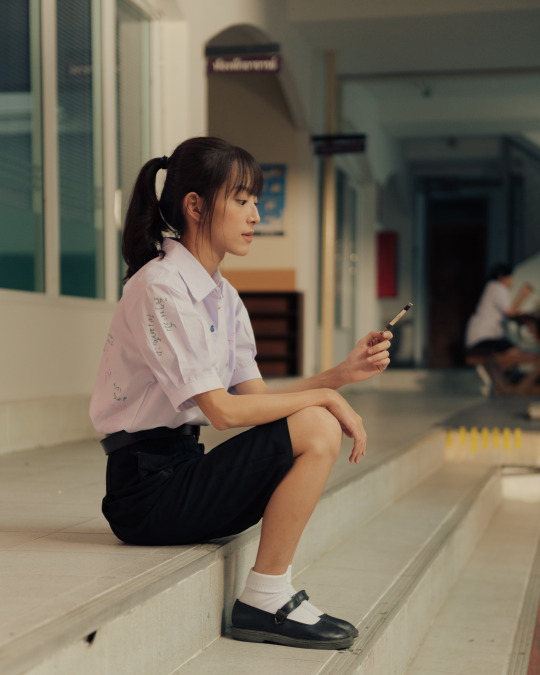
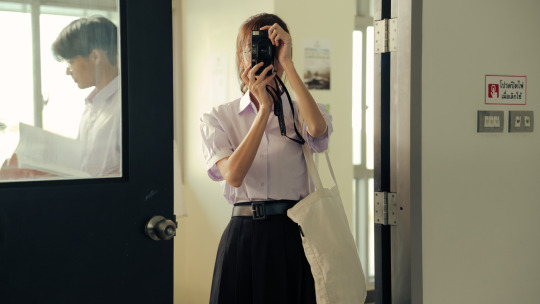







#คนที่ยืนข้างเธอ#Gaikai#GeneLab#GMMGrammy#t-pop#girl love#yuri love#lesbian#music video#girls#Spotify
25 notes
·
View notes
Photo

THREE MAN DOWN - 1st Full Album - "THIS CITY WON’T BE LONELY ANYMORE" ราคา 790 บาท 🚎🚎ค่าจัดส่งด่วน ใส่กล่องแพ็คกันกระแทกอย่างดี 60฿ รวมเป็น 850฿ (เริ่มทยอยจัดส่งสินค้าตั้งแต่วันที่ 29 เมษายน เป็นต้นไป) Special Box set (Limited Edition) -CD & 2 Layer Sleeves -Photobook -Postcard -AR Postcard -Poster -Collectibles Set Track List: 1. This city won't be lonely anymore 2. เดาไม่เก่ง 3. ตอนไม่ได้เจอ 4. เลือกคนที่เขารักเรา 5. คุยคนเดียวเก่ง 6. Friend zone 7. Time zone 8. ไปเถอะเธอ 9. ฝันถึงแฟนเก่า 10. รถฉันบินไม่ได้ 11. ทีมรอเธอ 12. ฝนตกไหม 13. ผ่านตา 14. หมดไอจี 15. ข้างกัน (City) 16. ถ้าเธอรักฉันจริง 17. ไม่เคยมีดาวในเมืองใหญ่ #ThreeManDown1stAlbum #ThreeManDown #GeneLab #ThreeManDown1stAlbum #ThreeManDown #ฝนตกไหม #ลืมแฟนเก่าไม่ได้ www.facebook.Com/kennemusicshop IG:kennemusic https://www.instagram.com/p/CM03zaoHQ8v/?igshid=s88tfexhq1y3
1 note
·
View note
Photo

Gene Lab Con @genelabrecords Photo BY : @mintjukkajee Sneakers : @vans Pants : CinTAS #GeneLab #GeneLabCon #GFest #GMM #GMMShow #Lr #Lightroom #Apple #iPhone11Pro (ที่ Union Hall) https://www.instagram.com/p/CjM-QRAhGIo/?igshid=NGJjMDIxMWI=
0 notes
Text
COCKTAIL ระเบิดความมันถึงแดนมังกร! ในเทศกาลดนตรีFH Pop Music Festival 2024
#SootinClaimon.Com : ขอบคุณแหล่งข้อมูล : หนังสือพิมพ์แนวหน้า https://www.naewna.com/entertain/797312 COCKTAIL ระเบิดความมันถึงแดนมังกร! ในเทศกาลดนตรีFH Pop Music Festival 2024 วันพฤหัสบดี ที่ 4 เมษายน พ.ศ. 2567, 13.47 น. บินตรงจากไทยร่วมแสดงคอนเสิร์ตครั้งแรกในจีน สำหรับวง COCKTAIL จากค่าย GeneLab ที่ได้เป็นหนึ่งในศิลปินจากประเทศไทยเข้าร่วมแสดงในเทศกาลดนตรีอลังการสุดยิ่งใหญ่ FH Pop Music…

View On WordPress
0 notes
Photo


สวัสดีค่ะนักอ่านบล็อกทุกคน!!!
ทุกคนเป็นแบบเราไหมคะ? ที่ช่วงนี้เสพติดการฟังเพลงมากๆไม่ว่าจะเพลงไทย เพลงสากล หรือเพลงของไอดอลเกาหลี จนวันนี้เราบังเอิญได้ฟังเพลงที่ชื่อว่า ”อยู่ในสาย” ของThree Man Down ซึ่งเพลงนี้เป็นเพลงของวงดนตรีไทยที่กำลังมาแรงในตอนนี้เลย
เราเลยอยากจะมาวิเคราะห์เพลงนี้ตามความรู้สึกของเราที่ได้ฟังเป็นครั้งแรก เราว่าเพลงนี้เป็นอีกหนึ่งเพลงรักที่หลายๆคนฟังดูแล้วจะต้องเศร้าไปตามๆกัน เพราะเพลงนี้เหมือนเป็นการขอร้องให้ใครคนหนึ่งอยู่ในสายของเรา ไม่อยากให้ใครคนนั้นหายไปไหน ถึงแม้จะไม่ได้พบเจอกันแต่ขอแค่ได้ยินเสียงกันก็ยังดี เพราะเสียงในสายของใครคนนั้นมันทำให้เป็นช่วงเวลาที่ดีที่มีความสุขและยังทำให้ตอนที่รู้สึกอ้างว้างมันมีความหมายขึ้นมา เลยทำให้เราคิดว่าการที่ขอให้ใครคนนั้นเขาอยู่ในสาย มันก็เหมือนการขอให้ใครคนนั้นเขาอยู่ในชีวิตของเราเช่นกัน
นอกจากเนื้อหาเพลงแล้วในส่วนของเอ็มวีเพลงนี้ มีความพิเศษอยู่ก็คือคนดูอย่างเราสามารถมีส่วนร่วมกับเพลงนี้ได้ โดยการเลือกตอนจบของเอ็มวีเพลงนี้ได้ด้วยตัวเอง โดยทางผู้จัดทำเอ็มวีเพลงนี้จะมีตอนจบให้เลือกอยู่สองแบบนั้นก็คือ take it และ leave it ซึ่งเราคิดว่ามันเป็นอะไรที่ใหม่สำหรับวงการเพลงมากๆ มันเป็นครั้งแรกของเราเลยที่ได้ฟังเพลงและได้กำหนดตอนจบของเอ็มวีเพลงด้วยตัวเอง นี่เลยเป็นอีกจุดหนึ่งที่น่าสนใจมากๆในเพลงนี้
สำหรับการวิเคราะห์เพลง”อยู่ในสาย” ของเราครั้งนี้ก็มาจากความรู้สึกของเราเอง หากผิดพลาดประการใดขออภัยมา ณ ที่นี้ด้วยนะคะ และถ้าใครมีความคิดเห็นอย่างไรกับเพลงนี้สามารถคอมเมนต์ใต้โพสต์เพื่อแลกเปลี่ยนความคิดกันได้เลยย
สามารถไปฟังเพลงกันได้ที่นี้เลย: https://youtu.be/kjf1jFIceKg
ขออนุญาตเจ้าของรูปภาพด้วยนะคะ
1 note
·
View note
Photo




PP KRIT “IF YOU REALLY LOVE ME” | Music Video
Original by Three Man Down | GeneLab+ Nadao Music Collab
They sang Safe Zone, so he sings If You Really Love Me.
More BKPP Content
18 notes
·
View notes
Text
Mutant year zero genelab alpha pdf

#Mutant year zero genelab alpha pdf pdf
#Mutant year zero genelab alpha pdf manual
#Mutant year zero genelab alpha pdf plus
#Mutant year zero genelab alpha pdf download
I made a quick form fillable version of the basic Year Zero sheet. So if you want to play in the spiritual, mystical future of the Third Horizon, you need a mechanic that reflects or more importantly encourages religiosity. Mysteries of the Unknown, published by Usborne Mythras or Swedish). And I suddenly realised that we have one. If you're looking forward to this, though, you can live vicariously with me as I make a character with. pdf, Random Potion Table.pdf This booklet con- and can be shown to the players when the tains extra material for Gamemasters.
WFRP 4e Ubersreik Adventures The Mad Men of Gotheim.
pliki użytkownika masaty przechowywane w serwisie.
This is a subreddit for discussion of Mutant: Year Zero Tabletop RPG, the Mutant setting and IP and other products that use the Year Zero Engine game system.
#Mutant year zero genelab alpha pdf pdf
th DECEMAttention PDF authors and publishers: Da Archive runs on your tolerance. I've looked at YouTube videos, and even was able to play a one-shot in the new Alien RPG. This includes some setting and background details that simply must be decided before we can finalize anything. Great job on making MYZ game system for foundry. 03 03 Zone compendium Welcome to Zone Compendium 3 for Mutant: Year KK The player map does not include these inlays, Zero and Mutant: Genlab Alpha. Genlad Alpha is every bit as fun and interesting as the original Mutant: Year Zero. Description Both the coloured, and printer friendly versions of the GenLab Alpha Character, Resistance and Watcher Sheets Payment & Security Your payment information is processed securely.
#Mutant year zero genelab alpha pdf download
1473174074538.pdf - freeload as PDF File (.pdf), Text File (.txt) or read online for free. This past weekend I got my copy of the latest Mutant: Year Zero supplement, called Mutant: Genlab Alpha. We understand there's an iOS version coming soon. Mutant Year Zero - Denizens of the Sinkhole Mutant Year Zero - Zone Sector 1 - Doom Sphere (Eng.
#Mutant year zero genelab alpha pdf plus
Here are 4 new animal types for Genlab Alpha (GLA), plus suggested lab names and 6 new animal powers. Home Mutant year zero character sheet Mutant year zero character sheet keyword after analyzing the system lists the list of keywords related and the list of websites with related content, in addition you can see which keywords most interested customers on the this website. This includes Genlab Alpha, Mechatron, Elysium, Coriolis, Forbidden Lands, Tales From the Loop, Vaesen, Twilight 2000, the Alien RPG, content from the Free League. Estimate shipping Refund Policy You may also like The 1976 Metamorphosis Alpha First Edition rulebook in a. I created a character for Dave's campaign, but it was a midweek game on the other side of the capital, and I decided the days of me driving round the M25 I look at MYZ: Genlab Alpha form-fillable pdf of the Ironclaw 2e character sheet Fragged Empires - Protagonist Archive 1. form fillable version of the basic Year Zero sheet. 03032021 Obcy od LM.pdf, 03042021 Okruch Raju.pdf Mutant: year Zero character sheet #708.pliki użytkownika Dihercen przechowywane w serwisie.Mysteries of the Unknown, published by Usborne Mythras A few weeks ago, Dave challenged me to read GenLab Alpha and suggest a campaign. pdfs, and some of the articles that had good rules (spells, monsters, Far Reaches of the World, etc.
#Mutant year zero genelab alpha pdf manual
PHB DMG MM Oriental Adventures Manual of the Planes Sword and Fist Tome and Blood Song and Silence Dragon 274-283, 315 Also an assorted collections of material from the WotC site, Web Enhancement. The Savage World of Flash Gordon campaign rulebook (plus the free Combat Options, the Character Sheet and Form Fillable Character Sheet, the. They are twisted images of the house of diversion, mutated monsters. I have not played any Mutant Year Zero games. Mutant year zero genlab alpha character sheet fillable

0 notes
Note
Entrapdak is still subtext, they didn't confirm it
Y’all can’t be seeing that entire arc and say they ain’t canonically in love. Season 3 and 4 already have huge evidence for it but like we can dive here too.
How about the first time we see Entrapta having a chance to see a dormant clone she immediately goes to it to check if it’s Hordak? She’s in a genelab of some kind, the tech here is amazing, and she’s immediately ignored it to check on this clone.
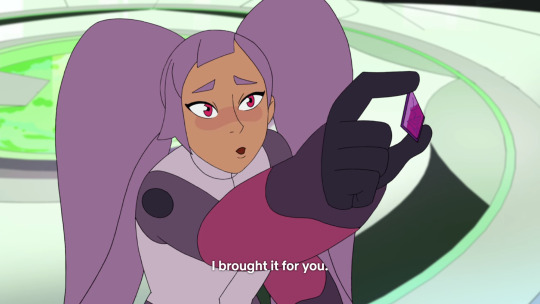
We learn she recovered the LUVD Crystal and has had it on her person this whole time just in case she finds Hordak and he needs it. She’s carrying it with her because she cares about him, she worries about him, she wants to help him.

She just so desperately wants it to be him, to see him again and for him to see her.
Of course this is Wrong Hordak, which leads to another very important reveal.

Entrapta has been keeping a list. We can infer she’s been watching the clones to try and determine which one is Hordak. This is an active tally in her mind, something she’s been doing. Entrapta isn’t really one to pine, she’s one to work, and this is her working in regards to Hordak.
On Hordak’s side?
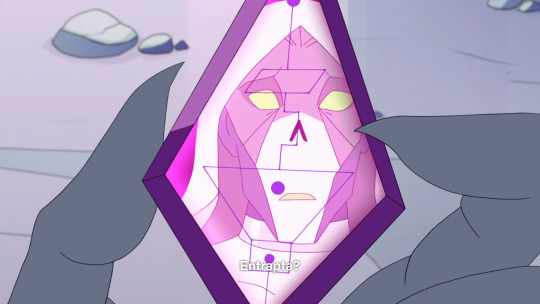
Entrapta loses the crystal on Prime’s Ship, and Hordak finds it. Hordak has been reset but he sees it and immediately remembers her, at least her name. His affections for her are strong enough he instantly begins to break control.
Other times we see a solid break of control like this are on chipped people, notably Catra and Spinnerella who break Prime’s grip through their love. This continues too. Hordak continues to have scenes holding and pondering the crystal, and when Prime has him help retrieve memories from an old body we get the scene of Hordak retrieving his own memories.
Notably he takes a risk, while Prime is distracted he lets himself dive into his own mind.

And very notably gets this flashback at the end of the sequence.
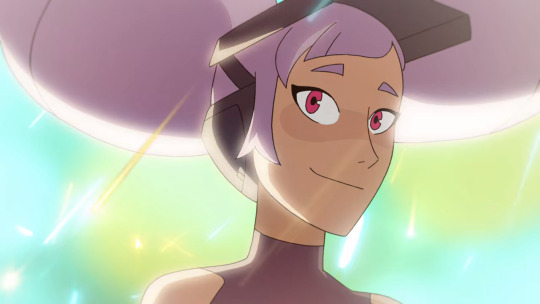

Let’s zoom forward to Failsafe, back on Etheria. To their ENCOUNTER. Hordak finds her, asks her what she is doing here. Then sees her and...

He recognizes her.

Entrapta does THIS, and then...

This is a CLASSIC trope right here. Character who isn’t supposed to feel things falls in love and drops that “What have you done to me?”


Entrapta takes his hand. A gentle touch between them as they found each other again.

As Swift Wind pulls her away the last thing she does is remind him his Imperfections are Beautiful, he’s Beautiful. She knows he’s out there, he recognizes her. She knows he’ll come back to her. There’s faith there, and Entrapta normally isn’t really one for that.
And that night.
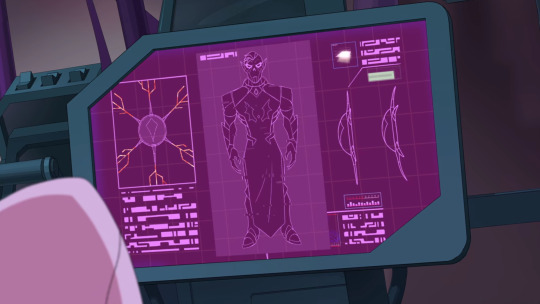
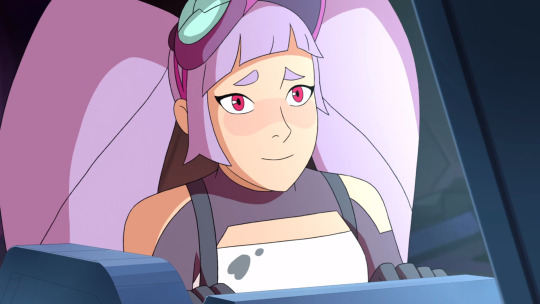
While everyone else is asleep she pulls up an image of him, just to look at it.
And then, and THEN. The real OOMF moment to it all. Entrapta is captured, Hordak is her primary guard here.
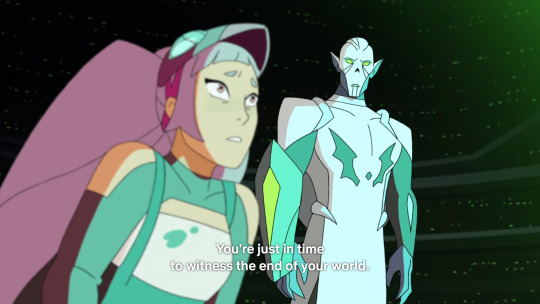
Instantly he is upset to see her upset, and when ordered to kill her later.
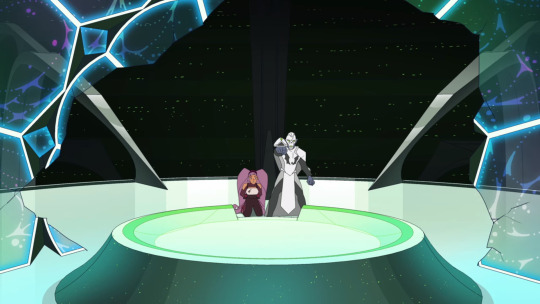
He breaks free. He reclaims himself to protect her, to save her. Just as she’s saved him.

He looks back at her, gentle and kind, and dare I say loving?

Entrapta confirms she simply believed in him, in his ability to overcome.
Then Prime does his space demon possession thing, and She-Ra purifies Hordak.


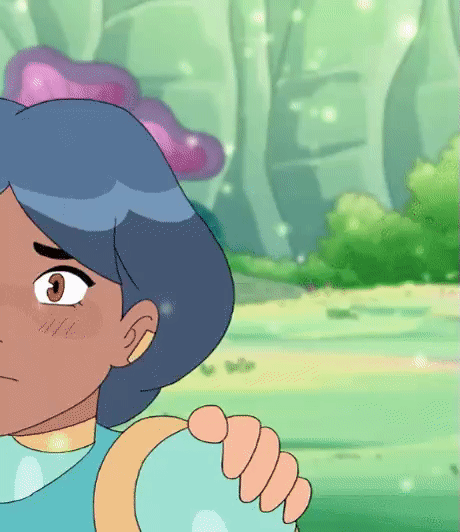
Like do I even need commentary for this?
This is a love arc. It’s really really blatant. They don’t kiss, they don’t say the words love but also its Entrapta and Hordak. That’s not really how they are? That’s part of the beauty of it too. They clearly, very clearly, love each other and it’s in their own way.
tl;dr did you watch the show?
6K notes
·
View notes